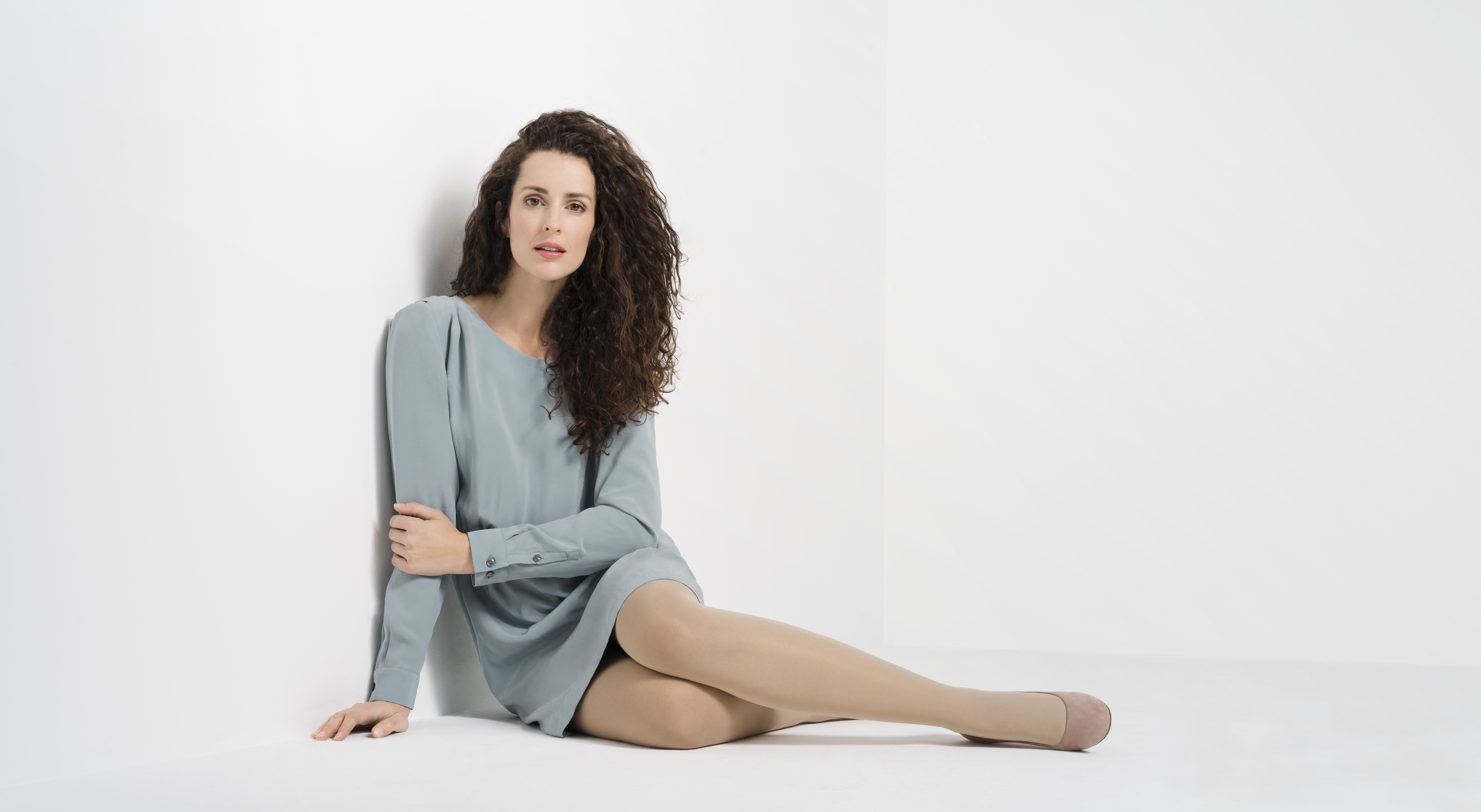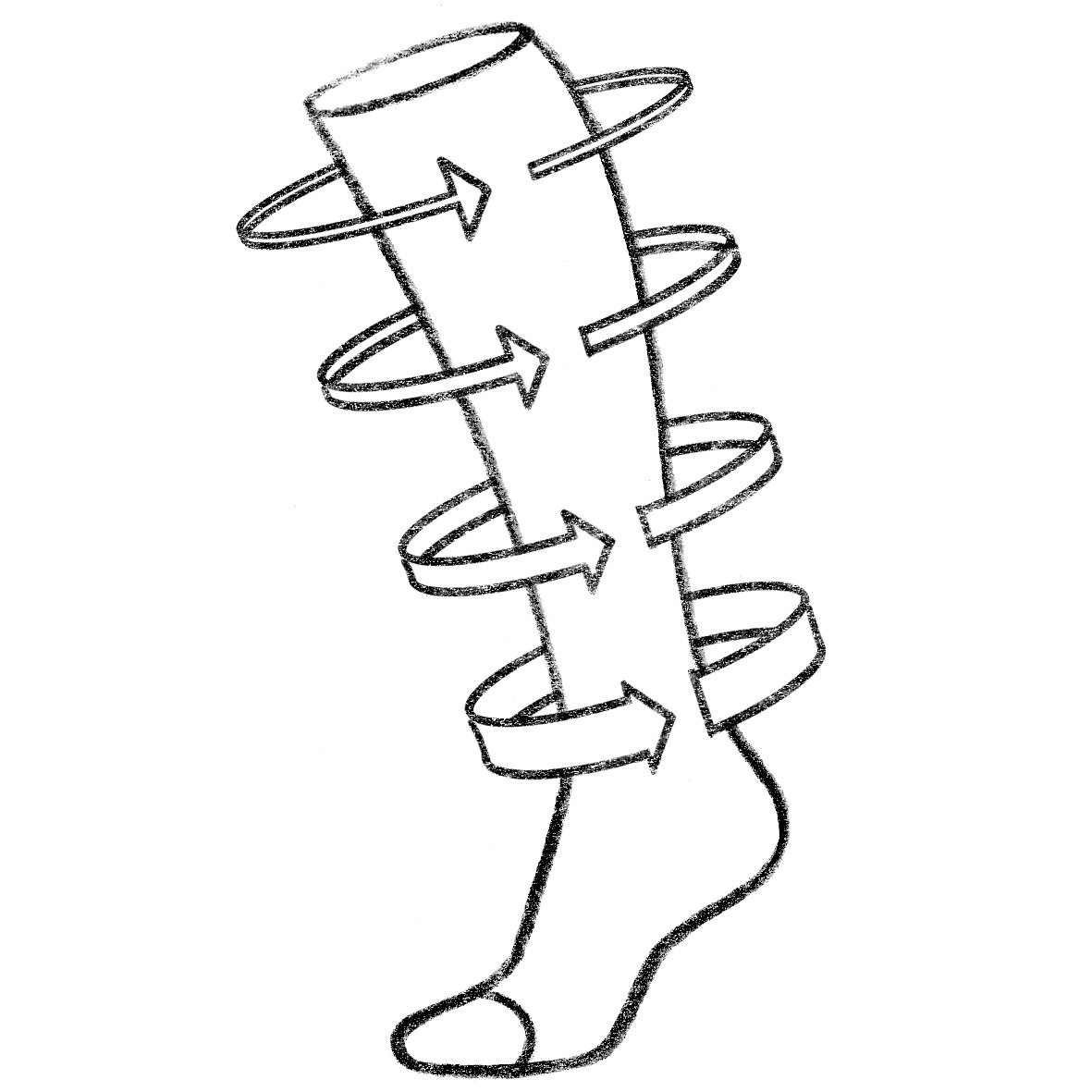Compression Therapy
For the treatment of Vein Disorders or Lipedema and Lymphedema
Circular knitted compression stockings for the treatment of Vein Disorders
Compression therapy is a proven method for the treatment of vein disorders. As part of the standard treatment, conservative therapy helps to improve the condition of the veins with no need for surgery. Compression stockings are also used for preventing vein disorders.
The diameter of the veins is reduced
The effectiveness of compression therapy depends on the controlled pressure exerted from the outside on the veins and tissue. The pressure compresses the diseased and thus dilated veins. The diameter of the veins becomes smaller and the venous valves close more effectively. In this way, the venous valves can once again function naturally as backflow valves and thus preventing blood from accumulating in the legs. In addition, the blood flows faster in the compressed veins, preventing blood clots (thrombosis). Compression therapy also means that the veins can absorb more tissue fluid from the intercellular tissue and reduce water retention and associated swelling.

External support
To accelerate the blood flow back to the heart, compression stockings have a predefined pressure profile. This means that the pressure decreases further and further from the foot to the thighs: the compression pressure at the ankle is 100 percent, in the calf area 70 percent and at the thigh only 40 percent. This pushes the blood up towards the heart and significantly improves blood circulation. Compression therapy can be supported by movement, as the calf muscle pump works more effectively and can pump more blood to the heart.
Compression stocking treatment
Medical compression stockings are used for the long-term treatment of vascular diseases such as vein disorders. They ensure the success of the therapy and prevent relapses. To fulfil their function, the stockings must fit perfectly. This is why circumference and length measurements are taken in specialist medical stores. Qualified staff will also check whether the patient can be supplied with a standard size. Otherwise, custom-made compression stockings are ordered.
Proactively prevent Vein Disorders
It is possible to prevent vein disorders with a healthy lifestyle. A balanced diet plays just as important a role as exercise. With targeted training and tips that can be easily integrated into everyday life, you can actively promote your own vein health.
Discover our elegant medical compression stockings Memory or our universal medical compression stockings Lastofa here.
-
 Varicose vein
Varicose vein -
 Vein with compression stockings
Vein with compression stockings
Flat-knitted compression stockings for Lipedema, Lymphedema, scars and burns
Compression therapy is an integral part of Complex Decongestive Physiotherapy (CDP). This treatment method is used for lymphedema, lipedema and in the therapy of burns and scars. It includes manual lymph drainage, compression therapy, skin care, exercise, self-management and education.
Compression therapy is an integral part of Complex Decongestive Physiotherapy (CDP). This treatment method is used for lymphedema, lipedema and in the therapy of burns and scars. It includes manual lymph drainage, compression therapy,skin care, exercise, self-management and education.
Compression therapy ensures the success of manual lymphatic drainage treatment by supporting stimulated lymphatic drainage and preventing the expansion of edema. The medical pressure of the compression bandages and stockings decreases from bottom to top and ensures that the lymph is transported in the direction of the intact vessels and can be better eliminated.
In Phase I, compression bandages made of short-stretch bandages or multi-component systems are being used. They can be perfectly adapted to the body forms which are constantly changing due to frequent lymph drainage. Because the technique is very complex and padding materials are sometimes necessary, the bandage should be fitted by specially trained therapists or by the doctor.
In the conservation phase, when the edema has been decongested as far as possible and the condition is to be maintained, medical compression stockings are made according to the individual body measurements. They are easier to wear and can be worn and taken off independently.
Only flat knitted compression stockings are used for edema patients. Flat knitted compression stockings are stronger than round knitted stockings. They offer the edema a firm resistance and a high, flat pressure, which acts on the tissue especially during movement. This pressure is called working pressure because the muscles have to work against it. When worn, the material stretches and creates a kind of micro-massage on the tissue and the edema. This stimulates the lymph flow.
Flat knitted compression stockings are always made to measure. They can thus be individually adapted to any body shape and to the special needs of lipedema and lymphedema patients. At the medical supply store, the stockings are fitted by experienced specialists - shortly before the end of Phase I, when the edema has been decongested by about 70%.
Ofa Tip: For easier wearing, we recommend a two-piece fitting - consisting of a leg stocking and trouser part, a leg stocking and toe cap, or a glove and arm stocking that are pulled over each other.
Discover our flat knitted compression qualities Lastofa Forte with merino wool and Lastofa Extra with cotton.

The correct pressure
Medical compression stockings, whether circular or flat knitted, are available in various designs and four strengths: from compression Class I with light pressure to very strong compression in compression Class IV. The deciding factor for the classification is the level of pressure in the ankle area. This is precisely defined and must be tested and verified by the manufacturers.
| Compression class | Compression class | Compression in kPA | Compression in mmHg |
|---|---|---|---|
| I | Light | 2,4 to 2,8 | 18 to 21 |
| II | Medium | 3,1 to 4,3 | 23 to 32 |
| III | Strong | 4,5 to 6,1 | 34 to 46 |
| IV | Very strong | 6,5 and greater | 49 and greater |
In general, the compression class required depends on the findings, but also on the respective body region. The doctor must determine individually which compression class and which type of stocking (e.g. knee or thigh stocking) is appropriate. The personal circumstances of the patient also play an important role, e.g. age, mobility, secondary illnesses or profession.

